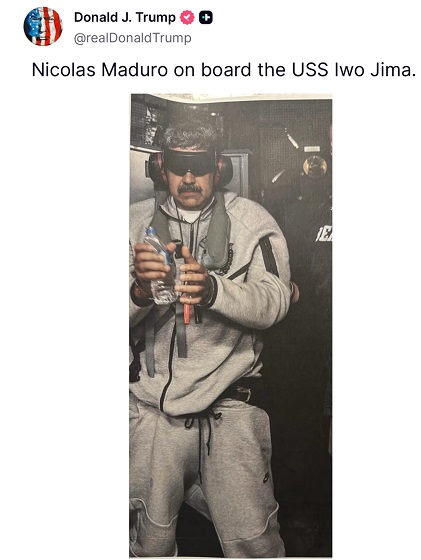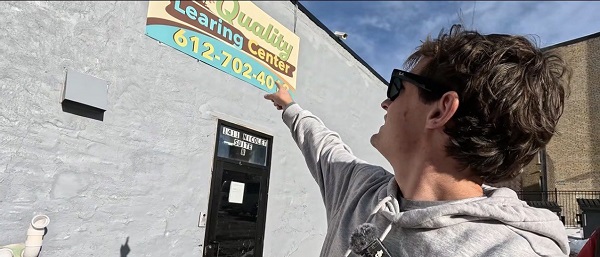Education
Questions people ask about RDC

by Joel Ward, President, RDC
In my role at Red Deer College, I have the opportunity to connect with people from across central Alberta. Whether this is at events hosted by RDC or at other activities in the community, I always enjoy speaking with students, alumni, parents, partners and interested citizens. A great many people are connected with RDC, and what I’ve found through my conversations is that they truly care about what’s happening here.
Over the years, people have asked me a variety of questions about our College, and today I’m happy to provide you with a sample of the commonly asked questions and my thoughts on each.
How many students attend RDC, and where are they from?
On any given day, we have about 7,500 students on our campuses. When I look back at our information from 2016-17, I see that 65% of our students came from central Alberta, with 15% from northern Alberta, 13% from the southern part and 7% coming from outside of our province. These students come from across Canada and from 16 countries around the world.
What is all the construction about?
We are fortunate to be in a time of growth and development at Red Deer College, and each new facility taking shape across main campus is the result of many years of careful and strategic planning. It’s hard to believe the preliminary site work for the Gary W. Harris Canada Games Centre/Centre des Jeux du Canada Gary W. Harris began back in the fall of 2015. Each day, we are moving closer to its completion and, in September 2018, we will welcome our first group of students to this teaching and learning centre. Not long after, the building will be a huge part of the 2019 Canada Winter Games. Our second construction project, the Alternative Energy Lab, demonstrates our commitment to the exploration and demonstration of new environmental technologies. The lab will provide learning and research opportunities for students and businesses to explore alternative energy solutions. Our third project, a new Residence, is under construction and is visible from 32nd Street. This unique facility incorporates solar panels on three sides and includes apartment-style studio suites, access for those with mobility challenges and short-term accommodation for our Apprenticeship students. All three new buildings support RDC’s goal of reducing our carbon footprint through energy efficient technologies.
What can I take at RDC?
We offer more than 100 programs, and these include everything from collaborative degrees, where students can take all of their courses at RDC, to university transfer programs, where they take their first year or two at RDC and complete at another institution. We also offer skilled trades, diplomas and certificates. This fall, we launched two new programs – the Human Resources Management Graduate Certificate and the Instrumentation Engineering Technology Diploma.
What new programs are on the horizon?
Looking ahead, our senior administrators and faculty are always looking for ways to develop new programs that will offer students the real-world information they need for today’s jobs. One example of this is happening right now in the School of Creative Arts, with two proposed cutting-edge programs – the Bachelor of Applied Arts in Film, Theatre, and Live Entertainment, and the Bachelor of Applied Arts in Animation and Visual Effects. Once we have approval from the government, we intend to launch these programs in the fall of 2018, offering students one-of-a-kind opportunities in the ever-growing film and special effects industries.
When will we be able to complete our degrees at RDC?
We continue to work with our government partners to achieve our goal of RDC becoming a degree- granting institution. If people didn’t have to leave to complete their degrees, as I described above,
Red Deer College | 100 College Boulevard | Box 5005 | Red Deer | AB | Canada | T4N 5H5 | www.rdc.ab.ca
then it would have a huge, positive impact on students, families and even the economy of central Alberta. We will continue to strive to make this goal a reality for our future students.
These questions provide a snapshot of what’s happening here at RDC, and they show how we are always growing and evolving to better serve you, our students and partners and communities. As we continue to grow, I look forward to sharing this information with you – in this column and when we meet in the community.
Joel Ward is President & CEO of Red Deer College
Read more from Todayville.
Alberta
Schools should go back to basics to mitigate effects of AI

From the Fraser Institute
Odds are, you can’t tell whether this sentence was written by AI. Schools across Canada face the same problem. And happily, some are finding simple solutions.
Manitoba’s Division Scolaire Franco-Manitobaine recently issued new guidelines for teachers, to only assign optional homework and reading in grades Kindergarten to six, and limit homework in grades seven to 12. The reason? The proliferation of generative artificial intelligence (AI) chatbots such as ChatGPT make it very difficult for teachers, juggling a heavy workload, to discern genuine student work from AI-generated text. In fact, according to Division superintendent Alain Laberge, “Most of the [after-school assignment] submissions, we find, are coming from AI, to be quite honest.”
This problem isn’t limited to Manitoba, of course.
Two provincial doors down, in Alberta, new data analysis revealed that high school report card grades are rising while scores on provincewide assessments are not—particularly since 2022, the year ChatGPT was released. Report cards account for take-home work, while standardized tests are written in person, in the presence of teaching staff.
Specifically, from 2016 to 2019, the average standardized test score in Alberta across a range of subjects was 64 while the report card grade was 73.3—or 9.3 percentage points higher). From 2022 and 2024, the gap increased to 12.5 percentage points. (Data for 2020 and 2021 are unavailable due to COVID school closures.)
In lieu of take-home work, the Division Scolaire Franco-Manitobaine recommends nightly reading for students, which is a great idea. Having students read nightly doesn’t cost schools a dime but it’s strongly associated with improving academic outcomes.
According to a Programme for International Student Assessment (PISA) analysis of 174,000 student scores across 32 countries, the connection between daily reading and literacy was “moderately strong and meaningful,” and reading engagement affects reading achievement more than the socioeconomic status, gender or family structure of students.
All of this points to an undeniable shift in education—that is, teachers are losing a once-valuable tool (homework) and shifting more work back into the classroom. And while new technologies will continue to change the education landscape in heretofore unknown ways, one time-tested winning strategy is to go back to basics.
And some of “the basics” have slipped rapidly away. Some college students in elite universities arrive on campus never having read an entire book. Many university professors bemoan the newfound inability of students to write essays or deconstruct basic story components. Canada’s average PISA scores—a test of 15-year-olds in math, reading and science—have plummeted. In math, student test scores have dropped 35 points—the PISA equivalent of nearly two years of lost learning—in the last two decades. In reading, students have fallen about one year behind while science scores dropped moderately.
The decline in Canadian student achievement predates the widespread access of generative AI, but AI complicates the problem. Again, the solution needn’t be costly or complicated. There’s a reason why many tech CEOs famously send their children to screen-free schools. If technology is too tempting, in or outside of class, students should write with a pencil and paper. If ChatGPT is too hard to detect (and we know it is, because even AI often can’t accurately detect AI), in-class essays and assignments make sense.
And crucially, standardized tests provide the most reliable equitable measure of student progress, and if properly monitored, they’re AI-proof. Yet standardized testing is on the wane in Canada, thanks to long-standing attacks from teacher unions and other opponents, and despite broad support from parents. Now more than ever, parents and educators require reliable data to access the ability of students. Standardized testing varies widely among the provinces, but parents in every province should demand a strong standardized testing regime.
AI may be here to stay and it may play a large role in the future of education. But if schools deprive students of the ability to read books, structure clear sentences, correspond organically with other humans and complete their own work, they will do students no favours. The best way to ensure kids are “future ready”—to borrow a phrase oft-used to justify seesawing educational tech trends—is to school them in the basics.
Business
Why Does Canada “Lead” the World in Funding Racist Indoctrination?
-

 International2 days ago
International2 days ago“Captured and flown out”: Trump announces dramatic capture of Maduro
-

 Energy1 day ago
Energy1 day agoThe U.S. Just Removed a Dictator and Canada is Collateral Damage
-

 International2 days ago
International2 days agoTrump Says U.S. Strike Captured Nicolás Maduro and Wife Cilia Flores; Bondi Says Couple Possessed Machine Guns
-

 International1 day ago
International1 day agoUS Justice Department Accusing Maduro’s Inner Circle of a Narco-State Conspiracy
-

 Haultain Research1 day ago
Haultain Research1 day agoTrying to Defend Maduro’s Legitimacy
-

 Business2 days ago
Business2 days agoVacant Somali Daycares In Viral Videos Are Also Linked To $300 Million ‘Feeding Our Future’ Fraud
-

 Daily Caller20 hours ago
Daily Caller20 hours agoTrump Says US Going To Run Venezuela After Nabbing Maduro
-

 International1 day ago
International1 day agoU.S. Claims Western Hemispheric Domination, Denies Russia Security Interests On Its Own Border









